Developed as a replacement for the SPH-4 helmet series, the HGU-56/P
provides a platform for a range of modules.
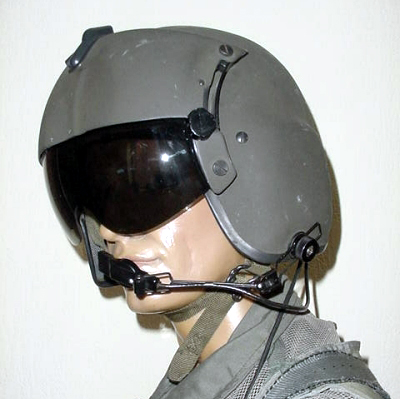
During the service life of the SPH-4 series
helmet, it was evident that several crashes with military helicopters could have had a
different ending. The protective capability of the SPH-4 could have been a lot better. In
the past, helmets were developed to function as a vehicle to carry the communication
devices and provide protection against sun, sound and debris. The US Army Aero medical
Research Laboratory established the requirements for a new aircrew helmet. This was based
on the result of studies performed on helicopter crashes involving SPH-4 series helmets.
When the US Army laid out the operational requirements for the HGU-56/P, they recognized
that the helmet was being drawn into the mission scenario of the aircraft itself through
the need for helmet-mounted sights, displays and night vision goggles. It also needed a
better side impact protection.
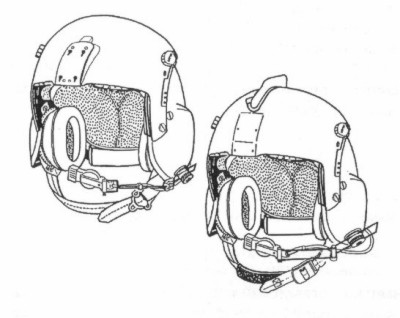
Helmet components:
The helmet shell is constructed of advanced graphite and polyethylene. The helmet shell
protects the head from impact and sharp objects and weights less then older designs. On
the back of the helmet is a build in airway for an air-conditioner to vent across the head
and visors for cooling and defogging. This blower adapter assembly, located at the right
rear, is designed for the future addition of a blown air cooling system. The adapter
features a locking tab that prevents accidental disconnection of the blower hose. A hinged
cover assists in keeping dust out of the connector assembly when the hose is no in use.
The energy-absorbing liner absorbs and reduces impact forces. It is made of polystyrene
material. Channels and cutouts in the liner allow space for internal components. The liner
is attached to the inside of the helmet shell via hook and pile fasteners.
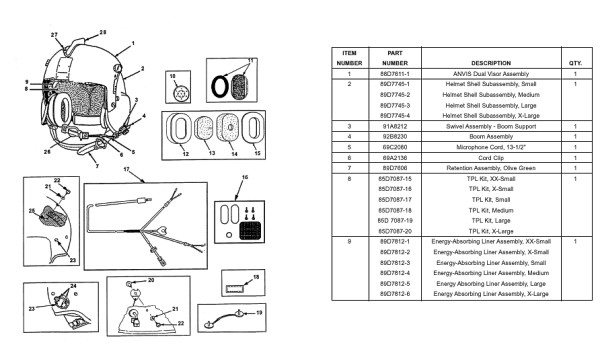
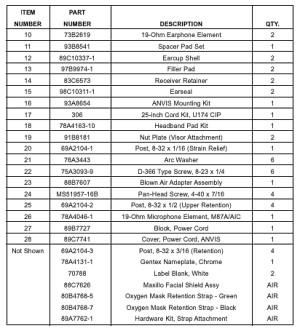
The thermoplastic liner (TPL) consists of
molded polyvinyl acetate sheets. A washable cloth cover covers these. The preformed TPL
will fit most head shapes. If necessary, the TPL can be heat softened and custom-fitted. A
ventilated thermoplastic liner is also available for operations in climates where
additional ventilation is desired.
Retention assembly, this consists of two ear cup retaining pads that support the ear cups
and the ear cup spacer pads, a chinstrap and a nape strap pad. The chinstrap is made of
nylon webbing reinforced with aramid tape. It helps holding the helmet in place. D-rings
allow tightening and loosening this strap. The nape strap pad is located at the inside
rear of the helmet (beneath the TPL). It improves stability by reducing forward rotation
when the nape straps are adjusted snugly. The retention assembly is also available with a
square buckle to meet user requirements. The assembly can withstand a 400 pounds pull.
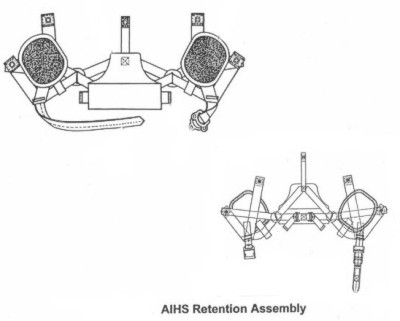
The ear cups are attached to a retaining
pad. Spacer pads may be installed behind them to improve fit. Ear seals provide comfort
and sound attenuation to protect against hearing loss and improves communications in a
noisy environment. The ear cups are of injection molded design and has superior energy
absorption to protect from side impact.
The communications system consist of a pair of earphones in the ear cups, a communications
cord and a swivel assembly. The earphones are tucked inside each receiver retainer and are
backed by a filler pad. The communications cord attaches the ear cups and microphone to
the helmet shell. The swivel assembly holds the boom, which serves as a mount for the
microphone. This boom showed to be a lot less strong then the older ones and tend to break
a lot.
The dual visor assembly has a neutral and clear visor lenses. These are operated via
actuating knobs on top and on the side of the assembly. The housing provides a
quick-disconnect mounting area for ANVIS goggles. The housing is also available with a
direct ANVIS mount. Other lenses are also available. These include amber, high contrast,
blue, gradient and laser protective lenses.
The outer neutral visor is raised and lowered by the left-hand actuating knob. The inner
visor is raised and lowered via the right-hand actuating knob. A tab on top of the ANVIS
mounting platform allows for one-handed attachment and removal of the goggles.
The helmet is also suited for the Cobra dual visor assembly that allows use of the
helicopter's tracking system and build in helmet sight. An oxygen mask adapter allows the
use of standard USAF mask for high altitude operations. For operations with open doors and
windows while flying, the helmet can be fitted with a blast shield.
The helmet is available in six different sizes. The design of the shell makes it
compatible with the M-43 US Army chemical warfare mask and hood.
More information on the HGU-56/P can be found in our ANVIS and THG articles. |